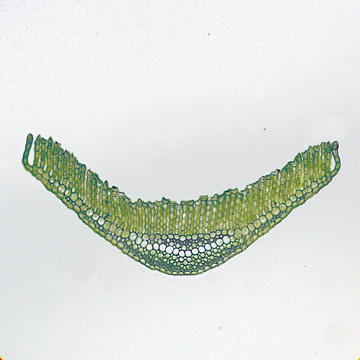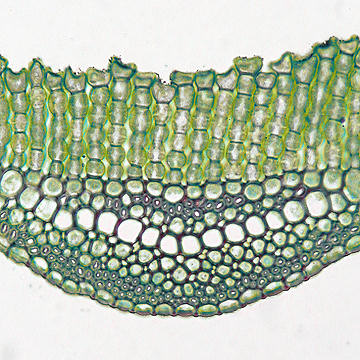Bryophytes, which include mosses, are known as non-vascular plants. Although mosses lack the vascular tissues xylem and phloem, many mosses posses water-conducting cells called hydroids and food-conducting cells called leptoids. Unlike the xylem of vascular plants, the hydroids found in mosses are not lignified.
Many mosses have leaves only a single cell-layer thick. A clear exception can be seen in a leaf of a Polytrichum sp. As seen in this image, the only parts of the leaf that are a one cell layer thick are the very edges. The midrib, or costa, of the moss leaf is seen in the center of this cross section towards the bottom.

The thick layer of cells on the top of the leaf are called lamellae. They are like ridges that run parallel to each other over the length of the leaf and are several cell layers long and tall and a single cell wide. The lamellae are filled with chloroplasts and increase the effective area for photosynthesis to take place.

Taking a closer look at the costa, we can see the water conducting hydroids that are visible as the larger row of cells near the middle. These have large, empty spaces inside to provide ample space for water to flow. The cells above and below are the food-conducting leptoids and the surrounding cells with the thickened cell walls are called stereids. The stereids have a supportive function in the leaf.
In the future I plan to write an article on the life cycle of a moss similar to the one I did recently for a fern.